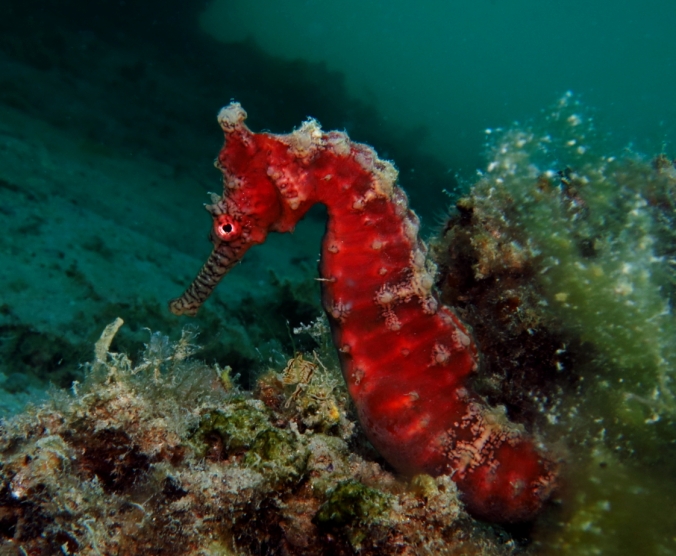I’m very proud to publish this guestblog by Georgia Nester. Georgia is a PhD-candidate at Curtin University, where she focuses on the use of environmental DNA on species that are otherwise hard to study. She has just published her first paper, which could be a game changer on how we detect and study seahorses and their relatives in the future.
Seahorses (members of the Syngnathidae family) have never been detected using environmental DNA (eDNA), despite the fact that globally there are 14 species classified as “Threatened” by the IUCN. We compared the ability to detect a wide range of fish including Syngnathidae of two existing fish metabarcoding assays (= methods to detect eDNA and two new fish metabarcoding assays which we developed. With our new assays, we detected three Syngnathidae species in eDNA survey of the Perth metropolitan area (Western Australia), while the existing assays did not detect any Syngnathidae. These detections include the seahorse species Hippocampus subelongatus and Hippocampus breviceps, which represents the first time a seahorse has been detected using eDNA.

The West Australian Seahorse (Hippocampus subelongatus). Photo credit: Maarten De Brauwer
With increasing human pressures and climate change resulting in a continuous decline of global biodiversity, there is a growing demand for rapid and sensitive conservation and monitoring programs. Using traditional methods, accurate data on species presence/absence and distribution is often difficult to obtain in aquatic environments. Environmental DNA metabarcoding is an increasingly popular solution. eDNA metabarcoding is capable of revealing what species are present in an environment by detecting traces of DNA they leave behind in the environment (e.g. shed skin cells, scales, blood, faeces etc). While eDNA metabarcoding surveys have been applied to a wide range of aquatic environments, no one has reported the detection of a seahorse to the best of our knowledge.
Many Syngnathidae species are considered threatened, however many more species (over 30%) lack the data necessary to assess their extinction risk. With the risk of a ‘silent extinction’ for many Syngnathidae species, the design of a non-invasive method for monitoring and managing these cryptic species may be critical to their survival. False negatives (failure to detect a species when they are in fact present) are significant in conservation management. For this reason, we aimed to determine if the Syngnathidae family (seahorses, seadragons and pipefish) were being inadvertently missed in current eDNA surveys.

Camouflaged species such as the shorthead seahorse (Hippocampus breviceps) can be hard to detect with the naked eye. Photo credit: Maarten De Brauwer
Australia is home to 128 species of Syngnathidae in 40 genera, 65 of which are found in Western Australian waters. The Perth metropolitan area in Western Australia was chosen as our study site as it encompasses several habitat types, including brackish and salt water. We sampled from five locations across the Perth metropolitan area and processed the samples back at the TrEnD Laboratory in Curtin University. The results of this study have recently been published in the scientific journal environmental DNA.
In total, we detected four species of Syngnathidae using our newly developed metabarcoding assays “16S_FishSyn_Short” and “16S_FishSyn_Long”. The Syngnathidae species we detected were the Western Australian seahorse (Hippocampus subelongatus), the shorthead seahorse (Hippocampus breviceps), the spotted pipefish (Stigmatopora argus) and the tiger pipefish (Filicampus tigris). With Syngnathidae populations declining due to exploitation for the aquarium trade and habitat degradation, we have shown that eDNA methodologies are capable of detecting Syngnathidae taxa in the environment. This will help inform conservation and management strategies by providing a much-needed non-invasive method for monitoring these populations. Importantly, our study represents the first time a seahorse species has been detected using eDNA methodologies.

The Western Australia seahorse (Hippocampus subelongatus, one of the first seahorse species to be detected with eDNA. Photo credit: David Harasti